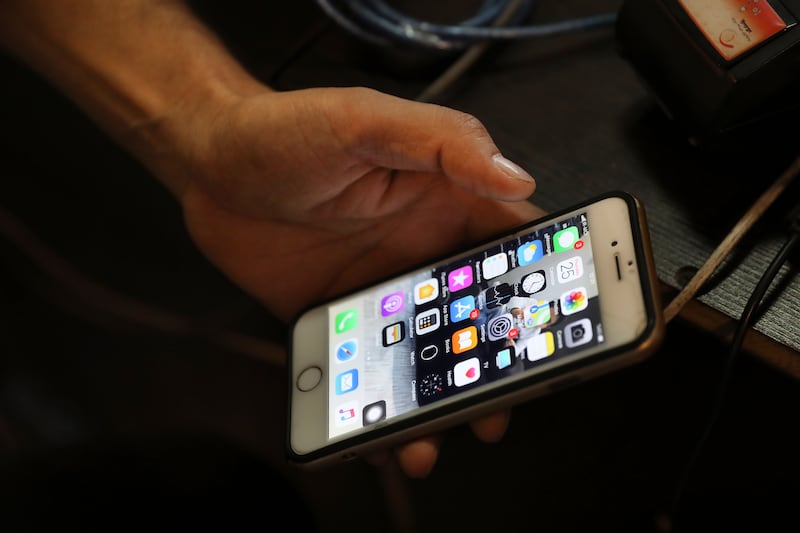If your phone service seems to have dead zones, you can do more than just complain about it. There are steps to take to better your signal whether at home or on the road.
I live in a rural area and have pretty great cell coverage with AT&T. But I have to drive through a small canyon multiple times a week where and I have zero service. I know that I have to wait the 10 minutes it takes to get through the canyon before I attempt to make any calls.
Imagine my delight when I received a text recently informing me that AT&T had installed a new cell tower right in my dead zone. I had been whining about my dropped calls in this area for years, but had never reached out to AT&T to either complain or request they place a tower in that location.
Don’t make the same mistake. If there are areas near your home or along your commute that have a weak or no signal, don’t sit quietly hoping you’ll get coverage one day. Take steps to make your voice heard and your service stronger.
I emailed the big three carriers to find out how they decide where to place new towers. None gave me specific details about their process
“We’re placing cellular antennas, like small cells, macro cell towers and distributed antenna systems (DAS) where they can make the most impact,” wrote Suzanne Trantow with AT&T.
Verizon offered a little more insight. Kacie Holder with the company responded, “Our engineers analyze our current network usage and data trends to determine placement…”
A post on a Verizon Customer Support page explained why users may not have a nearby tower. “There are some locations we cannot install a tower,” the customer service representative wrote. “This can be due to local government regulations, lack of available land to build a site or geographical limitations that are needed to support a tower.”
T-Mobile’s website notes it always looks at a number of sites before selecting a new location. The company looks at zoning and whether the location is suitable for telecommunication facilities. Then radio design engineers check out the pared down list of potential parcels and select the best site option. It considers customer usage patterns and locations where there are dead spots (even inside buildings).
CTIA, the wireless industry association explained in an email that providers look at factors such as population, terrain and capacity needs when planning new cell sites.
“Deployment decisions are dependent on available options to place base stations and are subject to a mix of federal, state, and local rules and permitting requirements,” write Jilane Rodgers Petrie with CTIA.
If you’d like to suggest a location for a provider to place a new tower, you can go about it a few different ways.
A customer support page on Verizon’s website suggests after telling them about the issue that “checking with your local building commission for the requirements and to voice support for a new tower is certainly another path you might want to take.”
CTIA’s Rogers Petrie emailed that “consumers can check with their wireless providers” to request new locations.
T-Mobile, Verizon and AT&T each have forms for land owners and managers to suggest their site as a new location for a tower. But none have an easily accessible page for customers to submit a request for a tower in their area. File a complaint for spotty service with your provider. If enough people are having an issue with the same area, it may draw your carrier’s attention to the problem.
But until you are fortunate enough to receive a glorious text like mine notifying you a new tower is going up nearby, there are other fixes to consider.
If you have a weak cell signal, before doing anything else, give the tried and true quick fixes a try. Restarting your phone, also toggling Airplane mode on for 30 seconds and then back off can reset cellular connections.
If you have a strong home Wi-Fi network, enable Wi-Fi calling on your phone. That way, even if there are areas in your home where you have a weak cell signal, you’re able to make calls using its Wi-Fi connection. Turn on this feature in your phone’s Settings.
A last resort is to check with your carrier to see if they sell network extenders or consider buying a cell booster. These can be pricey, but are effective at finding a weak cell signal and amplifying it.
PCMag suggests sticking to the big four cell booster companies: Cel-Fi, HiBoost, SureCall and weBoost because off-brands often aren’t FCC-certified “and could cause trouble with surrounding cell sites and networks.”
A couple of good options are the SureCall Flare 3.0 $379.99 which isn’t too difficult to install and can cover 3,500 square feet and the WeBoost Home MultiRoom that covers 5,000 square feet and is listed at $437.99 right now on Amazon.
A weak cell signal doesn’t have to be permanent. Your mobile carrier might come to your rescue. But if they don’t, there are some steps to take to remedy the situation. Some of those steps are free and others could make a dent in your wallet, but it might be worth it to make sure you never drop a call again.


